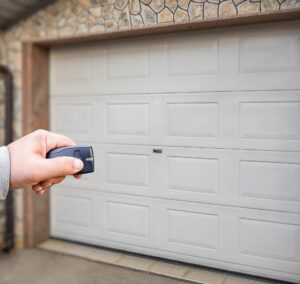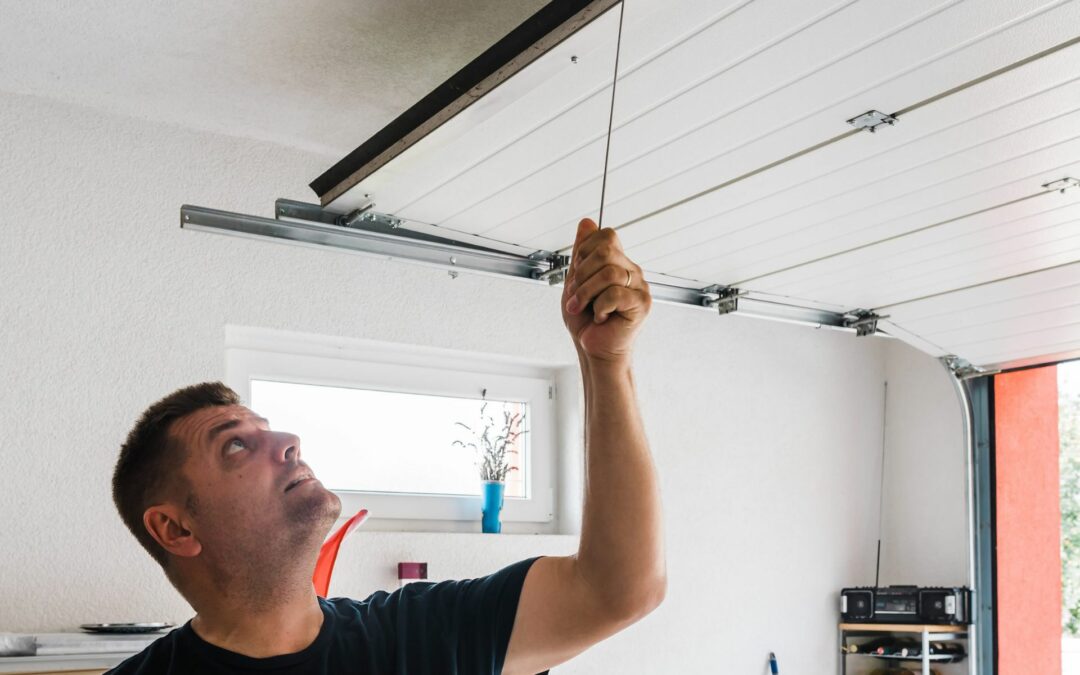Understanding Common Garage Door Issues
Garage doors are an essential part of our homes, providing security and convenience. However, like any mechanical system, they are prone to issues that can cause frustration and inconvenience. Common garage door issues can range from a stuck door to a noisy one, and understanding these issues can help you address them promptly.
One of the most frustrating issues is a stuck garage door. This can happen due to a variety of reasons, such as a malfunctioning opener or misaligned tracks. To troubleshoot this issue, start by checking if anything is blocking the door’s path, such as debris or objects. Additionally, inspect the tracks to ensure they are properly aligned. If the issue persists, it might be worth contacting a professional garage door repair service to identify and fix the underlying problem.
Quick Fixes for a Stuck Garage Door
When faced with a stuck garage door, it can be tempting to panic and immediately call for professional help. However, there are a few quick fixes that you can try before resorting to costly repairs.
First, check if there are any loose screws or bolts on the door tracks or hinges. Tighten them up and see if that resolves the issue.
Next, examine the rollers and ensure they are properly aligned and free from debris. If necessary, lubricate them using a silicone-based spray to improve their movement.
Lastly, inspect the garage door opener and make sure its batteries are working. Sometimes, a simple battery replacement is all it takes to get the door moving again. It’s important to note that these quick fixes are merely temporary solutions.
If the problem persists or if you’re unsure about performing any repairs yourself, it’s best to contact a professional garage door technician. They have the experience and expertise to diagnose and fix any underlying issues to ensure the long-term functionality and safety of your garage door.
How to Deal with a Noisy Garage Door
Is your garage door making annoying noises every time you use it? Don’t worry, you’re not alone. Noisy garage doors are a common issue that many homeowners face. The good news is that there are a few simple steps you can take to deal with the noise and restore peace and quiet to your garage.
One of the first things you can do is lubricate the moving parts of your garage door. This includes the hinges, rollers, and springs. Applying a silicone-based lubricant can significantly reduce friction and eliminate the squeaking or grinding noises that you may be experiencing. Be sure to avoid using WD-40 or other similar products, as they can attract dirt and grime, making the problem even worse.
If lubrication doesn’t solve the problem, it’s possible that your garage door is in need of some minor adjustments. Check the screws and bolts on the tracks and hinges to ensure they are tightened properly. Loose hardware can cause vibration and rattling, resulting in a noisy door. Tightening them up may help alleviate the issue.
Additionally, inspect the tracks for any bends or obstructions that may be causing the noise. In some cases, simply realigning the tracks or removing debris can make a significant difference. By following these simple steps, you can easily address the noise issues with your garage door. Not only will you enjoy a quieter garage, but you may also prevent further damage to your door and its components. Remember, regular maintenance and care are essential to keep your garage door running smoothly and silently for years to come.
Temporary Solutions for a Misaligned Garage Door
When your garage door starts to become misaligned, it can be frustrating and inconvenient. You might notice that the door is not closing properly or it is tilting to one side. While it is important to address this issue and ensure the long-term stability of your garage door, there are a few temporary solutions that you can try before calling a professional.
One temporary solution is to manually realign the door. Start by disconnecting the garage door opener, then carefully lift the door and adjust it back into its proper position. This may require some trial and error, so be patient and make small adjustments until the door is aligned correctly.
Once you have done this, test the door by opening and closing it manually to ensure it is functioning properly. Keep in mind that this is just a temporary fix, and you will still need to address the underlying issue to prevent further misalignment.
Easy Ways to Fix a Slow or Unresponsive Garage Door Opener
Is your garage door opener acting sluggish or completely unresponsive? Don’t worry; there are a few easy ways to fix this common issue.
One possible cause is a low battery in the remote control or keypad. Start by replacing the batteries and see if that improves the responsiveness of your garage door opener.
Another common culprit could be an obstruction in the garage door tracks. Over time, dirt, debris, or even small objects can get in the way and impede the smooth operation of the door. Inspect the tracks and remove any obstructions that you find. In some cases, a good cleaning might be necessary to ensure optimal performance.
Additionally, check the sensitivity settings on your garage door opener. If they are set too high or too low, it can cause the door to either close too slowly or not respond at all. Most modern garage door openers have adjustable sensitivity controls, usually located on the motor unit. Experiment with adjusting these settings to find the optimal balance and restore the proper functioning of your opener.
By following these easy steps, you can typically resolve issues with a slow or unresponsive garage door opener. However, if the problem persists or you encounter more complex issues, it’s recommended to seek professional assistance to ensure that the problem is addressed properly and efficiently.

Addressing Issues with Garage Door Remote Controls
Garage door remotes are a convenient and efficient way to operate your garage door from a distance. However, like any electronic device, they can experience issues that can be frustrating to deal with.
One common issue is when your remote stops working and fails to activate the garage door. This can be caused by a few factors, such as a low battery or signal interference. If your remote is not working, the first thing to check is the battery. Replace it with a fresh one and see if that solves the problem.
If the battery is not the issue, it’s possible that there is some sort of signal interference. This can be caused by other electronic devices nearby, such as a cordless phone or a Wi-Fi router. Try moving these devices away from your garage area or turning them off temporarily to see if the remote starts working again. If neither solution works, it may be time to contact a professional for further assistance.
Temporary Solutions for a Garage Door with Sensor Problems
Having trouble with your garage door sensors can be a frustrating experience. These sensors are an essential safety feature that ensures the door stops and reverses if there is an obstruction in its path. When the sensors malfunction, it can prevent your garage door from closing properly, leaving your home vulnerable to potential security risks and leaving you inconvenienced. While it’s important to address the root cause of sensor problems and have them fixed by a professional, there are a few temporary solutions you can try to get your garage door working again.
Firstly, ensure that the sensors are properly aligned. Over time, they may shift or become misaligned, causing them to fail to communicate with each other effectively. Check if there are any obstructions in the sensor’s line of sight, such as dirt or debris. If so, gently clean the sensors and remove anything that might be blocking their view.
Use a level to ensure that they are perfectly aligned and facing each other. If alignment is not the issue, try cleaning the sensors with a soft cloth and some mild detergent. Dirt and dust can accumulate on the sensors, impeding their function. Wipe away any grime and test the door to see if it is working properly. Also, check if there are any loose wires or loose connections. If you notice any, ensure they are securely connected.
By addressing these temporary solutions, you may be able to resolve the issue with your garage door sensors. However, it’s important to remember that these are just temporary fixes and that professional assistance should be sought for a permanent solution. Ignoring or neglecting the problem may lead to further damage or more serious safety concerns.
Get Professional Garage Door Assistance Today!
Don’t let common garage door issues disrupt your daily routine. Whether it’s a stuck door, noisy operation, misalignment, or sensor problems, our team of professionals is here to help. Contact us now to schedule a service appointment, and let us handle all your garage door repair needs. With prompt and reliable assistance, we’ll have your garage door back to optimal condition in no time. Don’t wait – reach out today for expert solutions you can trust!

